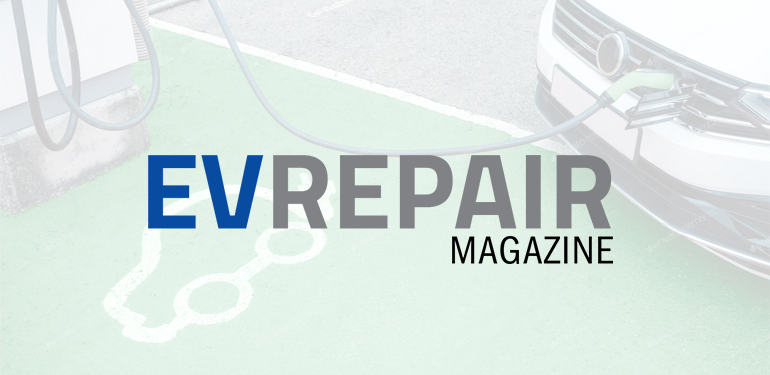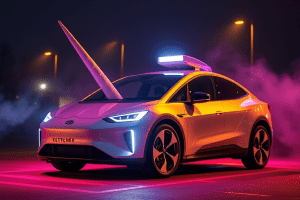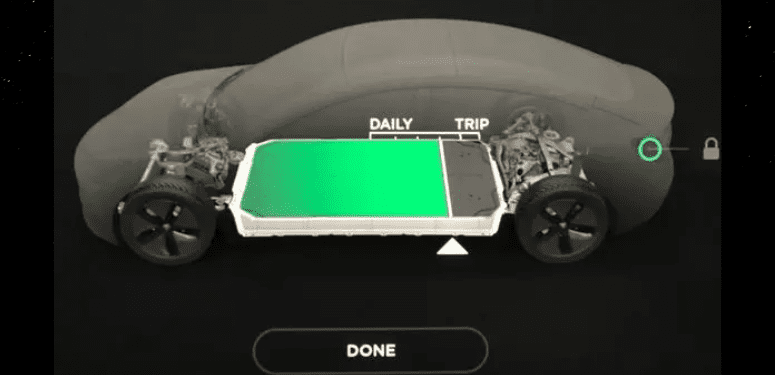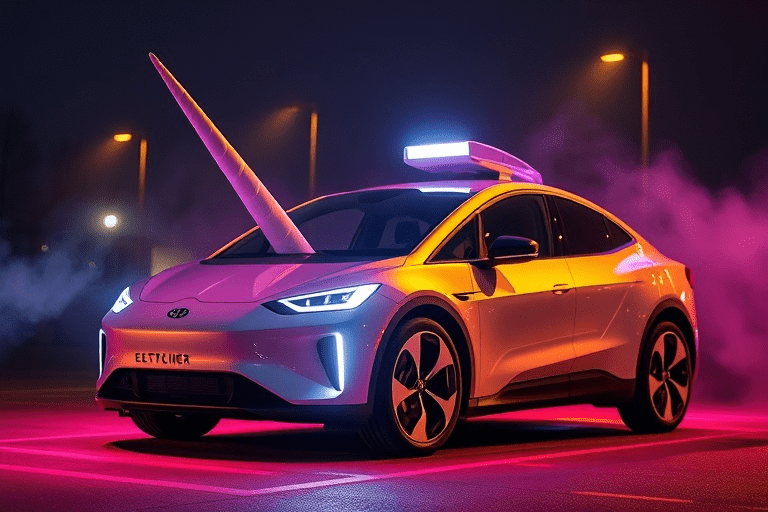| IDTechEx’s example sensor suite resembling what is typically deployed on highly automated vehicles. Source: IDTechEx |
|
They may not be ubiquitous yet, and the day-to-day advantages that they will start to provide may not be noticeable, but automated technologies across the automotive industry are starting to come of age. The ‘robotaxi’ industry is beginning to see more small commercial deployments. Autonomous trucks are on the cusp of real-world use, and next-generation sensor technologies are being deployed on vehicles that are for sale. This article covers some of the most exciting developments and milestones over the last year and makes predictions about what might come next year. Robotaxis Services Starting to Come Online The biggest news from this year in the world of robotaxis is commercial services have come online in San Francisco. This is a major milestone that the industry has been working towards for some time, but it is unfortunately not as exciting as it initially sounds. Cruise was the company to reach this point in San Francisco first. Their journey has been quite long and is littered with other smaller successes. It began in October 2020, when Cruise was awarded a driverless testing permit by California DMV. This meant it could run the vehicles without anyone on board, not even a test driver. In June 2021, it was then given permission to start offering rides to San Franciscans without a safety driver on board. These were free rides and had no paying customers, an important distinction. The big step came in September 2021 when both Waymo and Cruise were awarded a “driverless deployment permit”. The final part of the puzzle would be gaining permission to operate a commercial service from California Public Utilities Commission, which was awarded to Cruise in June 2022. People may think they can now turn up in San Francisco and hop into a driverless robotaxi without a second thought. While this may be true on paper, it is quite limited in practice. Only 30 vehicles, out of Cruise’s fleet of approximately 150 vehicles*, are allowed to be used. The vehicles are limited to 30mph, the service can only operate between 10 pm and 6 am, and only a small part of the city can be used – not the transportation revolution hoped for, but a step in the right direction. Cruise hopes to prove competence and expand its testing parameters over the coming months and years. Perhaps though, the real question is, what has happened to Waymo? Waymo has been at the forefront of the autonomous vehicle race for some years, but in 2021 this changed. IDTechEx uses a metric called ‘miles per disengagement’ to assess the progress and maturity of the autonomous car players. The metric is the number of miles a player such as Waymo completes in a year divided by the number of times a safety driver must intervene with the autonomous system, taking back control. In practice, this suggests the average number of miles that an autonomous vehicle can complete before coming across a situation that it might not be able to deal with. The two charts below show how Waymo slipped from being the leader in miles per disengagement to ranking seventh. Waymo’s performance slip came as it ramped up its testing in San Francisco, whereas previously, it had favored less challenging, more suburban environments. IDTechEx suspects that this slip in performance might be related to the fact that Cruise had started a limited service in San Francisco. However, Waymo is now eyeing a deployment in Los Angeles, which generally has a slightly more robotaxi-friendly road network than San Francisco.
|
| Top players, miles per disengagement, California DMV, 2020. Source: IDTechEx |
| Top players, miles per disengagement, California DMV, 2021. Source: IDTechEx |
|
Besides the slipping in its own ranking, Waymo’s performance reduction from nearly 30,000 miles per disengagement down to just shy of 8,000 has a knock-on effect on the industry. IDTechEx uses the average performance of the top three players to assess how the industry is developing. Since 2015 this number has been growing exponentially and predictably. With Waymo’s regression in 2021, the average for the top three has not grown as expected. As a result, the timeline for further deployments is likely to be pushed back a little. Hopefully, Waymo can get back on track this year, and IDTechEx expects to see another year of significant growth in assessing the metric again in the Spring of 2023.
|
| Miles per disengagement. Source: IDTechEx |
|
Outside of the US, China has also been ramping up its autonomous robotaxi deployments. Baidu, Pony.ai, and AutoX have been making some significant progress. Baidu and Pony.ai conduct significant testing in Beijing and, like Cruise and Waymo, have limited commercial robotaxi services. Baidu and Pony.ai were given permission to start a robotaxi service with no driver behind the wheel in April of this year, with one slight catch. Their services must still have a supervisor present in the vehicle, presumably sitting in the front passenger seat. They will also be restricted to a set number of cars, operating hours, and geofencing. Baidu will be able to operate ten cars between the hours of 10 am and 4 pm, while Pony.ai will only have four cars operating between 9 am and 5 pm, both operating in an area of 23.1 square miles. AutoX has been growing its robotaxi service in Shenzhen for over a year and now has a service area nearly three times the size of Baidu and Pony.ai’s in Beijing at 65 square miles. More information on the robotaxi market, along with the privately owned autonomous vehicle market, can be found in IDTechEx’s full report, “Autonomous Cars, Robotaxis & Sensors 2022-2042”. The report also forecasts sensor demand for cars by different SAE levels of automation and gives an overview of the latest sensor developments. Roboshuttles Struggling to Get a Foot Hold This new and exciting future mobility solution is fast becoming not so new, not so exciting, and possibly soon confined to history. The concept of a roboshuttle-powered future is that these small, shared vehicles will be able to operate more flexibly than a bus. Thus, offering more diverse routes and some working on an on-demand basis. These vehicles first emerged decades ago but were restricted to running on isolated roads with embedded guidance systems. From a functional perspective, they were comparable to a very cheap but slow autonomous train with very limited capacity. The modern open-road version has been around since the early 2010s. The pioneers in this industry are EasyMile and Navya, two French companies with similar vehicles and funding of around EUR€100 million each. Over the years, they have supplied around 200 vehicles each to different companies, transport agencies, and other mobility stakeholders that are interested in trialing the technology. The problem is that after many years of trials, they appear no closer to deploying a commercial, fully developed, roboshuttle service. Even more concerning is that interest in these vehicles seems to be on the decline, with the number of companies actively working on roboshuttles appearing to have peaked. This was a key finding of IDTechEx’s heavy-duty autonomous vehicles report, which can be seen in the figure below. Notable companies such as Local Motors have been forced to close their doors, while others like Continental and Bosch have shown concepts in the past but then gone quiet on the topic.
|
| Number of active roboshuttle companies. Source: IDTechEx |
|
Not only are the number of active companies declining, but there is also evidence that suggests some key players might be struggling. Navya’s is a leader in the industry, but its sales have been declining since 2018. Some of this is undoubtedly attributed to the global COVID-19 pandemic, but that would not explain the fall in 2019, and some recovery would be expected by now. It may show in the 2022 financial results that this has now happened for roboshuttles, but IDTechEx expects that the decline will continue. IDTechEx believes these vehicles have major hurdles and fundamental flaws that need to be overcome for them to prosper. Roboshuttles will share the challenge of robotaxis in proving that the autonomous technology is mature enough to be trusted with the lives of its passengers. On top of this, they also battle more fundamental regulations governing what constitutes a road-worthy vehicle. This is the problem of homologation. The problem is that in most regions, a vehicle needs a long list of features and engineering criteria to be signed off as road worthy. This list includes things like seat belts, a minimum number of wheels, brakes, lights, etc. – things that make cars safe. But roboshuttles tend to be missing some key features from this list since they have been designed from the ground up to be driverless. The most obvious omissions would be the steering wheel, pedal controls, rearview mirrors, and speedometer. This creates friction. Even if the autonomous technology could be 100% signed-off today, the rules of the road would still likely prohibit these vehicles from being commercially used. This is an area where IDTechEx is seeing progress though. Nuro, specializing in driverless deliveries, has been pushing for changes to allow their driverless pods to operate on the road. One result of this is that NHTSA recently put a rule change in place that meant driverless vehicles not carrying people did not require seatbelts and airbags. Progress! However, this is only a small step towards commercially operational driverless goods delivery vehicles in the US. IDTechEx fears there could be a long road ahead for roboshuttles to get all the law changes that they require. Despite the pragmatic pessimism of the previous paragraphs, there is still some hope for roboshuttles. Two key activities that IDTechEx would point to for reasons to be optimistic are Cruise’s intentions with the Origin and ZFs acquisition of ‘2getthere’. Cruise is one of the leaders in the robotaxi race and is part of General Motors. Its original concept is a mix between a robotaxi and roboshuttle. It looks like a roboshuttle but has a comfortable cabin for six people rather than a utilitarian cabin for mass transport. It is also designed to travel at full motorway speeds rather than the pedestrian shuffle of most roboshuttles. These differences are mostly irrelevant though. What is important is that GM has the mite and sway to influence NHTSA and get the changes it needs to commercialize the Origin with its non-conventional, non-homologated design. Furthermore, it is actually in a position to scale up production when it eventually gets the green flag. It also helps that Cruise is arguably the most mature and most successful of the robotaxi players, perhaps trading blows with Alphabet’s Waymo. ZF does not have the same mite and sway as GM, but it is a leading tier-one supplier with production capabilities and revenue in the tens of billions. In 2019 it acquired 2getthere, a roboshuttle manufacturer that has worked on off-public roadway solutions for many years. At that point, the difficulties of roboshuttles would have been well known, so this would have been a calculated bet by ZF, one that they likely think has a future. A comprehensive coverage and analysis of the roboshuttle industry, along with in-depth profiles of key players, is available in IDTechEx’s report, “Heavy-Duty Autonomous Vehicles 2023-2043: Trucks, Buses & Roboshuttles”. This report also covers autonomous buses and autonomous trucking. It is complete with unit sale forecasts, revenue forecasts, and forecasts of radar, camera, and LiDAR for heavy-duty autonomy. Autonomous Trucks, the New Juggernauts of Automated Vehicles Autonomous trucks have quickly become one of the most exciting autonomous prospects over the past year. One of the key developments and milestones in the field occurred last year in December when field leader TuSimple completed an 80-mile journey across Arizona with an empty cabin and zero human intervention. The reason to get excited about this is all the conditions are right for this industry to explode in the coming years. Firstly, there is a measurable and known driver shortage in the US, Europe, and China. A few factors drive this, key ones being: an aging driver population without the necessary pipeline of replacements, the massive growth in e-commerce, and the need for more freight on the road. Secondly, there is a significant overlap between the capability of today’s autonomous technology and the demands of the environment that the vehicles will operate in. The first deployments will likely be between distribution hubs separated by vast stretches of interstate. This eliminates lots of the more challenging scenarios for autonomous vehicles, such as pedestrians, stop signs, un-protected left turns, turning right on red lights, and other situations which rely on human judgment. Finally, autonomous trucks can bring a significant increase in productivity. Many of the journeys across the US take several days for humans to complete due to daily driving time limits. Autonomous vehicles will not be subject to this and have the potential to half the delivery time for journeys over a certain distance. There is a need to increase fleet capacity, which driverless trucks could do. The operational design domain is within reach of what autonomous technologies can achieve, and there is the prospect of significant productivity uplift per truck with autonomy. It looks like the stars are aligning for autonomous trucks, and IDTechEx is expecting to see announcements of the first commercial ‘driver-out’ routes coming online in the next one to two years. A complete overview of the autonomous trucking market and its key players is available in IDTechEx’s report, “Heavy-Duty Autonomous Vehicles 2023-2043: Trucks, Buses & Roboshuttles”. This report also provides a 20-year forecast of unit sales, revenue, and key autonomous componentry for the autonomous heavy-duty vehicle industry. Another Exciting Year for Automotive Radar The big news in the world of automotive radar is that consumer vehicles began shipping with next-generation 4D imaging radars early this year. 4D imaging radars bring a significant performance boost compared to the previous generation of radars with a 16X increase in resolution*. The conventional tier-one suppliers achieve this by using four radar chips rather than the single chip found in incumbent models. For the consumer, this will translate to smoother, more effective ADAS features, improving their experience and, most importantly, improving the functionality of safety features like automatic emergency braking. So far, vehicles that have been fitted with 4D imaging radars include the BMX iX, which uses the ARS540 model from Continental, and the Chinese Feifan R7, which uses a model from ZF. Away from the conventional supply chain, some start-ups are getting closer to deploying their next-generation 4D imaging radars, and these have some even more exciting tech! They can be thought of as the next generation beyond those being supplied by Continental and ZF today. The ones that IDTechEx are most excited about are Israel-based Arbe and Texas-based Uhnder. While the established tier-ones are now adopting Silicon CMOS technologies with 40-45nm transistor sizing, these start-ups are blazing ahead with a 22nm process for Arbe and a 28nm process for Uhnder. These smaller transistor sizes allow for more imaging potential to be crammed onto a smaller chip with some incredible results. Uhnder can get the same resolution with one chip as Continental and ZF do with four, while Arbe brings a 10X increase in resolution above Uhnder, Continental, and ZF. These gains in performance are fantastic, but the start-ups need to establish a route to production and deployment, and thankfully they have. In October 2022, Arbe announced that it has partnered with Veoneer, which is planning to develop radars using Arbe’s reference design. Veoneer says it aims to have pre-production versions of these new 2K 4D imaging radars ready by mid-2023. Uhnder, though, are going to be entering the market even sooner. Its radar chip will be bought to market by tier-one supplier Magna under the product name Icon. The Icon will be deployed on the upcoming Fisker Ocean, which is due for its first deliveries in November 2022. 4D imaging radars are a big step in enabling higher-performing autonomous features for consumer vehicles. However, another technology is also arriving, which has been touted as a game changer for years but has simply been too expensive. LiDAR has finally reached a price point where OEMs are prepared to start integrating it, and there has been a flurry of model adoption announcements this year. 2023 could then be the year of the LiDAR. “Automotive Radar 2022-2042” gives a comprehensive overview of the radar market for ADAS (advanced driver assistance systems) and AD (Automated Driving) vehicles. Key technology trends such as semiconductor technology, operating frequency, and high channel count radars are identified, discussed, and forecasted over a 20-year period. *here, resolution is used as a simplified version of virtual channels count, incumbent radars have 12, ZF, Continental and Uhnder have 192, and Arbe has 2,000. Virtual channel count is not directly linked to resolution, with other factors having an effect too. Trends in Automotive LiDAR LiDAR is not a new technology. It is not quite as old as radar, but it might be surprising to learn it has been around since the 1960s. The first versions were simple and initially used for ranging applications in aerospace and defense. As the development and applications increased, LiDAR grew the ability to measure angles, velocity and produce detailed 3D maps, but the equipment was costly. The benefits for automotive were clear in the 2000s. It could offer the abilities of radar at a much higher resolution. However, until recently, it was simply too expensive for widespread adoption across the automotive industry. The last year or so seems to have been a turning point for LiDAR, with more and more OEMs announcing models that will be equipped with them. Volvo will be using Luminar along with Chinese OEM SAIC. Continental and Denso are shipping on Toyotas and Lexus. The Audi A8 carries a Valeo, as do some Mercedes. BMW have chosen Innoviz, as have Volkswagen, and the list goes on. These examples are mainly premium vehicles so far; however, the automotive industry has a well-demonstrated trickle-down effect, with flagship technologies spreading down the price points over a period of 5-15 years. With the automotive industry’s current focus on safety and the benefits that LiDAR has been promising, this trickle-down effect might look more like a gush/pour/stream/cascade than a trickle. For more information on technology benchmarking, business opportunity exploration, player activities tracking, and market analysis, please refer to the IDTechEx report “Lidar 2023-2033: Technologies, Players, Markets & Forecasts”. Three Predictions for 2023 With all the excitement over the past year and the promise for the future, here are three predictions from IDTechEx for 2023.
All things considered, there is lots to look forward to in the automotive world going into 2023. Here at IDTechEx, the future mobility team will closely monitor all developments and provide more in-depth analysis in future reports and portal content. *The Honda Legend was also level three certified in Japan, but only 100 were made available. To find out more about IDTechEx research, please visit www.IDTechEx.com/Research. Sample pages are available for all IDTechEx reports. *Cruise had 138 vehicles registered with California DMV for testing in 2021. About IDTechEx IDTechEx guides your strategic business decisions through its Research, Subscription and Consultancy products, helping you profit from emerging technologies. For more information, contactresearch@IDTechEx.com or visit www.IDTechEx.com. Images Download: https://www.dropbox.com/scl/ Media Contact: Lucy Rogers Sales and Marketing Administrator +44(0)1223 812300 |






























